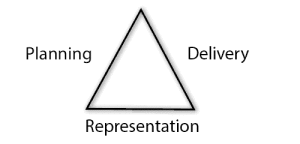Sunday Trading or Weekend Market?
In this series of posts I’ll explore some of the issues local businesses face. What do I mean by a local business?
There are two types: established and developing. An established local business will do three things:
- Employ workers and pay them at least a living wage (original definition)
- Pay their taxes without tax avoidance
- Invest surplus locally
These are objectives and many local businesses fall short of them for a variety of reasons. Some are too small to employ staff or can’t afford the living wage. Some are too small to owe taxes or they do not generate sufficient surplus to invest.
The economic environment in which local businesses operate is adverse. It is adverse because of the decisions made by politicians of all parties over many decades. So, most local businesses are developing. They may aspire to be established but find they fall short. This is why many local businesses are small.
And we have to face it, many self-employed people have little prospect of breaking even but are under pressure to stop signing on. Self-employment is one of ploys used by this government to massage the unemployment figures and so claim employment is on the increase.
Sunday Trading
The demand to bring an end to restrictions on Sunday trading has been in the news recently. The BBC has found an endless procession of vicars to discuss family life. They also found trade unionists who rightly express concern for workers who not only have to work on Sundays but will lose the extra pay many receive for working on a Sundays.
I want to leave these arguments to one side. It is well established that everyone should have at least one day each week free from work and it is reasonable to expect this to be on the same day as the rest of their family. Perhaps it is not essential everyone agrees on which day it is. Not all religious traditions celebrate the same day and people should be free to celebrate their chosen day and equally free to trade on the other six.
My concern though is why the government is considering legislation to enable local authorities to authorise lifting restrictions on Sunday trading. Members of Parliament rarely have ears for anyone other than corporate lobbyists. It has to be at their behest because it is solely large corporations that lose out at present. Large stores are currently permitted to open for only 6 hours on Sundays.
This allows a minor competitive advantage for small local businesses. With so little money in circulation, local economies cannot afford corporate interests to hoover up more and salt it away in offshore accounts.
Weekend Markets
There is a limited amount of money in circulation and lifting these restrictions will not increase it. It will increase the amount leaving local economies. If only local businesses had their own lobby, maybe we would start to see legislation that favoured them. Just imagine if it were possible to extend the restrictions to 48 consecutive hours of closure each weekend! This would allow smaller traders to establish their businesses, build a customer base and maybe introduce a greater sense of community into the shopping experience.
The large supermarkets, department stores and shopping malls have taken shopping out of the public space. If they were not permitted to open at weekends, it would offer public spaces an opportunity to develop what they had to offer. This might actually favour churches and other non-trading bodies as their activities belong in the public space. (I understand some churches in the United States are in effect shopping malls. This is not something I would encourage as it is still privatising shopping space.)
But it is quite different to envision stepping out of a church service into a thriving local economy. Under these circumstances the church would contribute to the weekend economy by being another reason for people to be present in the marketplace.
Family life? Well, the Corporate employees would have their 48 hours. If this allows smaller businesses to become established, then maybe they could afford to close mid-week when demand would be less while the big stores are open.
Of course, this will never happen and even if it did, it wouldn’t work in isolation from other changes needed in the local economy. So, this is part of a larger vision. Next week I shall show how the local economy could be funded.


